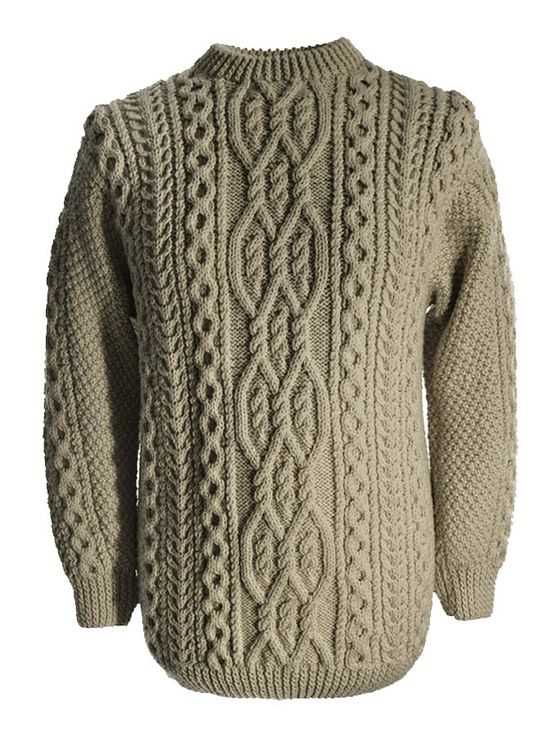
Irish fisherman sweaters, also known as Aran sweaters, are a traditional and iconic part of Irish culture. These sweaters are known for their intricate cable stitches and rich history dating back centuries. They were originally made by hand by the wives and mothers of fishermen in the Aran Islands, who used their knitting skills to create warm and durable garments for their loved ones.
Today, Irish fisherman sweaters are not only a symbol of Irish heritage but also a timeless fashion statement. They are loved for their classic designs and cozy feel, making them a popular choice for both men and women. Whether you are an experienced knitter or a beginner looking to try something new, there are plenty of knitting patterns available to help you create your own Irish fisherman sweater.
Knitting patterns for Irish fisherman sweaters come in a variety of styles and difficulty levels, allowing knitters of all skill levels to take on the challenge. From simple crew neck sweaters to more complex cardigans with intricate cable patterns, there is a pattern for every preference. These patterns often include detailed instructions and charts to guide you through the knitting process, ensuring that you can create a beautiful and authentic Irish fisherman sweater.
What are Irish Fisherman Sweaters?
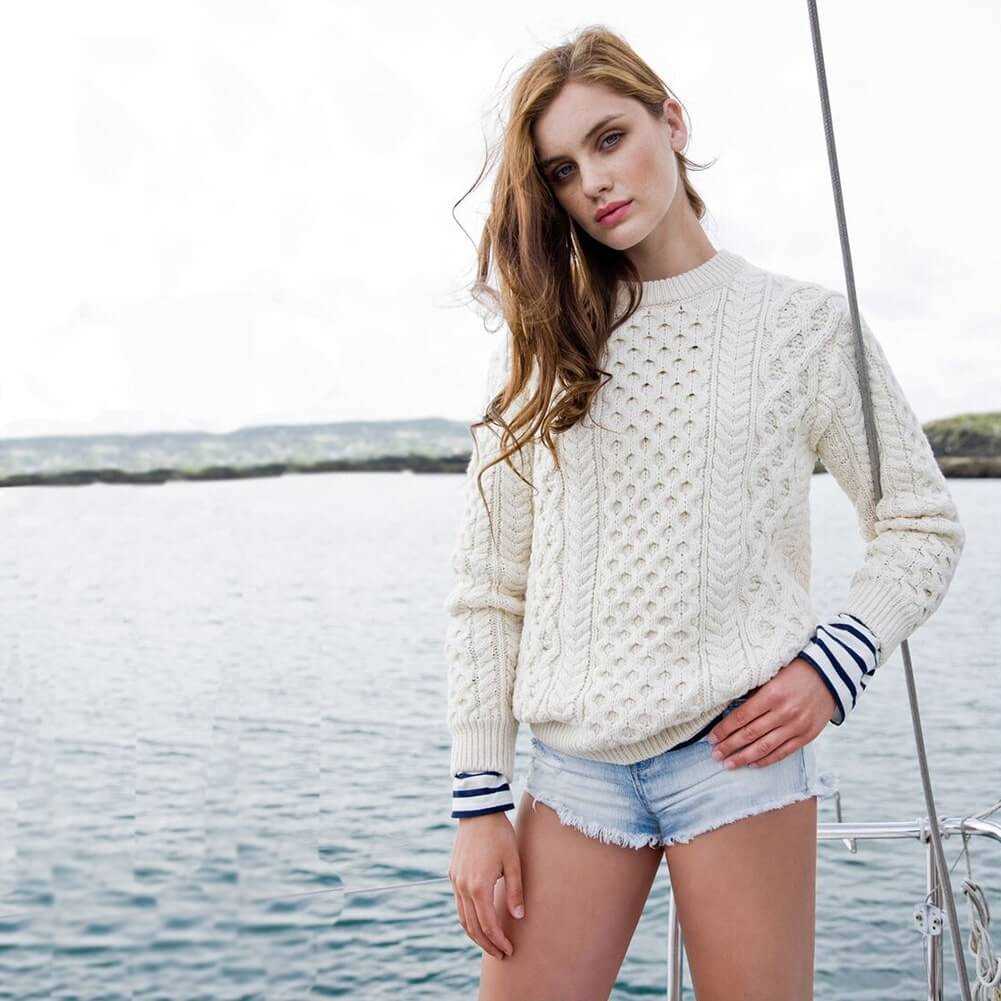
Irish Fisherman Sweaters, also known as Aran sweaters, are traditional knitwear garments that originate from the Aran Islands off the west coast of Ireland. They are characterized by their intricate cable and diamond stitch patterns, which were developed to represent different elements of island life, such as the ropes used by fishermen and the fields of crops.
These sweaters have a rich history and were traditionally worn by fishermen to provide warmth and protection from the harsh Atlantic weather. Each family on the Aran Islands had their own unique knitting patterns, passed down through generations. Today, Irish Fisherman Sweaters are popular not only for their functionality but also for their timeless style and cultural significance.
The knitting patterns used to create Irish Fisherman Sweaters are complex and require a high level of skill. They typically feature cable stitches, which create raised textures resembling ropes, and diamond stitches, which are thought to symbolize wealth and success. The natural fibers used, such as merino wool or pure wool, provide excellent insulation and durability.
Irish Fisherman Sweaters are now available in a range of designs and styles. They can be found in classic crewneck or turtleneck styles, as well as cardigan options. These sweaters have become popular around the world, not only for their warmth and durability but also for their unique and timeless aesthetic. Whether worn for outdoor activities or as a fashion statement, Irish Fisherman Sweaters continue to be cherished for their tradition, craftsmanship, and connection to Irish heritage.
The History of Irish Fisherman Sweaters
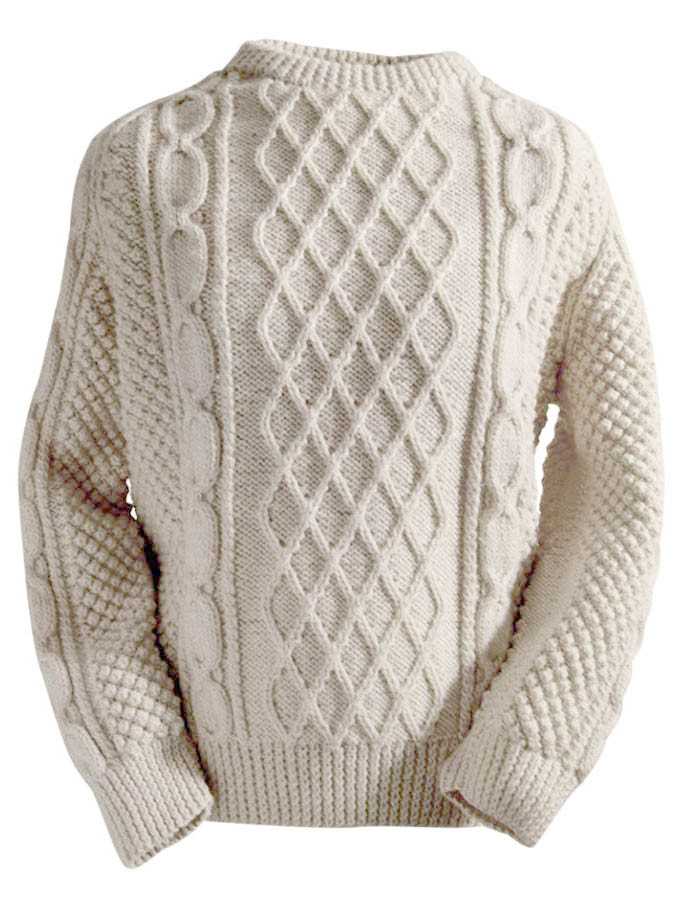
Irish fisherman sweaters, also known as Aran sweaters, have a long and rich history dating back to the early 1900s. These iconic knitwear pieces originated in the Aran Islands off the west coast of Ireland, where the local communities relied heavily on fishing for their livelihood. The sweaters were originally hand-knit by the fishermen’s wives and mothers to protect their loved ones from the harsh, cold conditions at sea.
The design of Irish fisherman sweaters is not only practical but also deeply symbolic. Each intricate pattern woven into the sweater tells a unique story, often representing different elements of the fishermen’s lives. The most common motifs found on these sweaters include cable stitches, diamond patterns, and honeycomb stitches. These patterns were passed down through generations, with each family adding their own personal touch.
One of the most significant features of the Irish fisherman sweater is its use of natural materials. Traditionally, these sweaters were made from untreated wool, which provided excellent insulation and protection against the cold and wet weather. The natural oils in the wool also made the sweaters water-resistant, ensuring that the fishermen stayed warm and dry throughout their long days at sea.
Today, Irish fisherman sweaters have become a timeless fashion statement and a symbol of Irish heritage. They are no longer limited to the shores of Ireland but have gained worldwide popularity. Knitting patterns for these sweaters are widely available, allowing knitters of all skill levels to recreate this traditional garment. Whether worn as a practical layer for outdoor activities or as a stylish fashion piece, the Irish fisherman sweater continues to captivate people with its rich history and timeless charm.
Ancient Origins
The tradition of Irish fisherman sweaters, also known as Aran sweaters, dates back centuries to the rugged coastal communities of Ireland. These sweaters were originally hand-knit by the wives and mothers of fishermen, who carefully crafted intricate patterns that told stories of their families and their communities. Each design was unique and often included elements inspired by local traditions and folklore.
The origins of the fisherman sweater can be traced back to the late 19th century, when traditional knitting techniques were passed down through generations. The patterns were created using a combination of cables, diamonds, and other intricate stitches, which not only added warmth but also represented different aspects of life at sea.
The art of knitting these sweaters was deeply connected to the fishing industry, as they provided protection and insulation for fishermen working in harsh weather conditions. The thick, woolen yarn used in the sweaters was sourced locally from sheep that grazed on the rugged Irish landscape, making the sweaters durable and long-lasting.
As time went on, the popularity of fisherman sweaters spread beyond the coastal communities of Ireland. They became a symbol of Irish heritage and a fashion statement around the world. Today, these sweaters continue to be cherished for their craftsmanship, unique patterns, and rich cultural history.
In summary:
- The tradition of Irish fisherman sweaters dates back centuries to the coastal communities of Ireland.
- They were originally hand-knit by women and featured intricate patterns inspired by local traditions and folklore.
- The sweaters provided protection and insulation for fishermen working in harsh weather conditions.
- The popularity of fisherman sweaters spread worldwide, making them a symbol of Irish heritage.
Popularity in the 19th Century
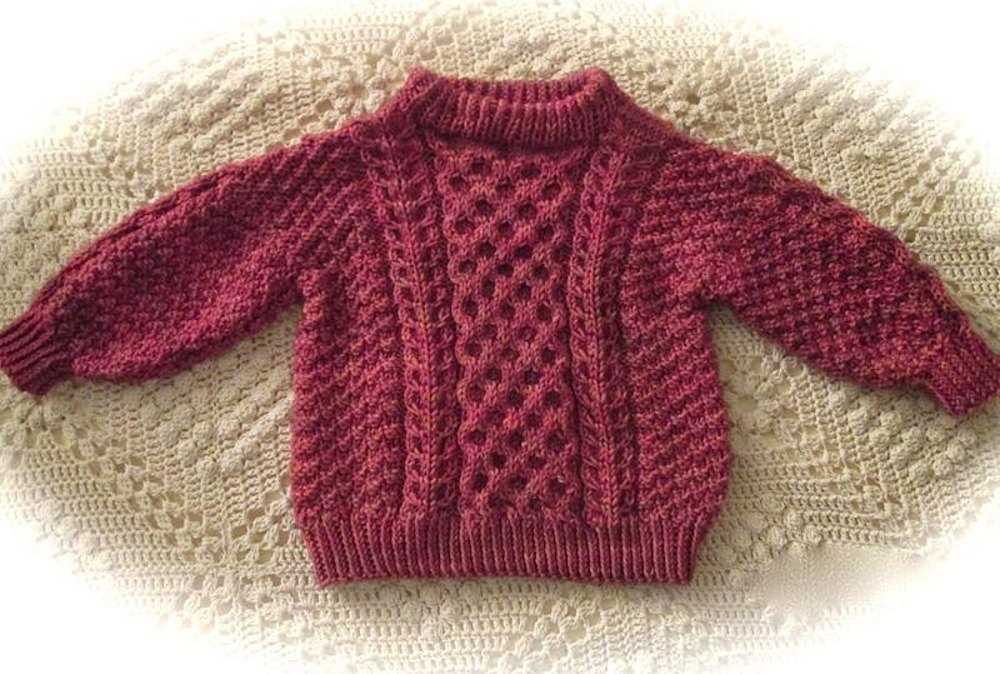
Irish fisherman sweaters have a long and rich history that dates back to the 19th century. During this time, these traditional knitwear pieces gained popularity not only in Ireland but also across the world. The unique designs and impeccable craftsmanship of these sweaters made them highly sought after by both locals and tourists.
One of the reasons for the popularity of Irish fisherman sweaters in the 19th century was their practicality and durability. Made from natural wool, these sweaters were designed to protect fishermen from the harsh and unpredictable ocean conditions. The tightly-knit stitches and thick yarns provided insulation and helped keep the body warm, even in freezing temperatures.
Another factor that contributed to the popularity of Irish fisherman sweaters was their symbolism and cultural significance. The intricate patterns and motifs used in the designs were inspired by local traditions and folklore. Each stitch had a deep meaning and was believed to bring protection and good fortune to the wearer. This added an element of charm and mystique to these sweaters, making them not only functional but also cultural artifacts.
As the 19th century progressed, Irish fisherman sweaters began to gain recognition outside of Ireland. They were exported to markets in England, Europe, and even the United States. Their popularity among sailors and seafarers further contributed to their global fame. These sweaters became a symbol of Irish identity and craftsmanship, encapsulating the spirit and resilience of the Irish people.
In conclusion, the 19th century marked a significant period in the popularity of Irish fisherman sweaters. Their practicality, durability, and cultural symbolism made them highly sought after not only in Ireland but also across the world. Today, these sweaters continue to be cherished and appreciated for their timeless beauty and traditional craftsmanship.
Revival in the 20th Century
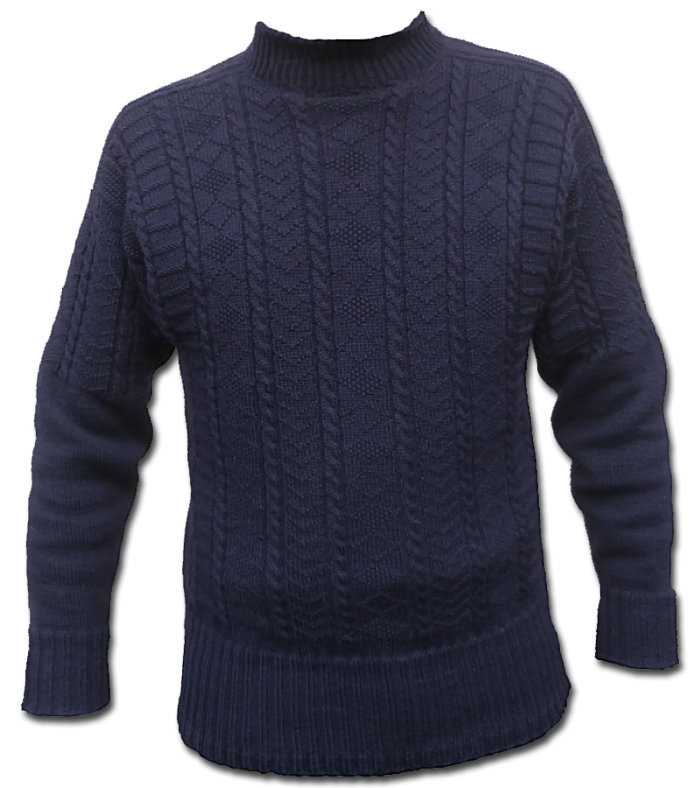
The Irish fisherman sweater, also known as the Aran sweater, has a rich history that dates back centuries. However, it wasn’t until the 20th century that there was a revival of interest in these traditional knitting patterns.
One of the key factors contributing to the revival of the Irish fisherman sweater was the renewed interest in traditional craftsmanship and heritage. As people became more interested in preserving cultural traditions, the Aran sweater emerged as a symbol of Irish identity and craftsmanship. The intricate patterns and unique designs of the sweater showcased the skill and creativity of the Irish knitters, making it highly sought after.
During the 20th century, there was also a rise in tourism to Ireland, and the Aran sweater became a popular souvenir for visitors. Tourists were drawn to the authentic craftsmanship and the historical significance of the sweater, making it a staple item for those looking to bring a piece of Irish culture back home.
In addition to its cultural significance, the Irish fisherman sweater also gained popularity in the fashion world. Designers and fashion enthusiasts alike recognized the timeless appeal of the sweater and its ability to add a touch of rustic charm to any outfit. As a result, the Aran sweater started to appear on runways and in fashion magazines, further cementing its place as a fashion statement.
Today, the Irish fisherman sweater continues to be a beloved piece of knitwear, appreciated for its intricate patterns, quality craftsmanship, and rich history. Whether worn for its cultural significance or as a fashion statement, the Aran sweater is a testament to the enduring appeal of traditional knitting patterns in the 20th century and beyond.
Typical Features of Irish Fisherman Sweaters
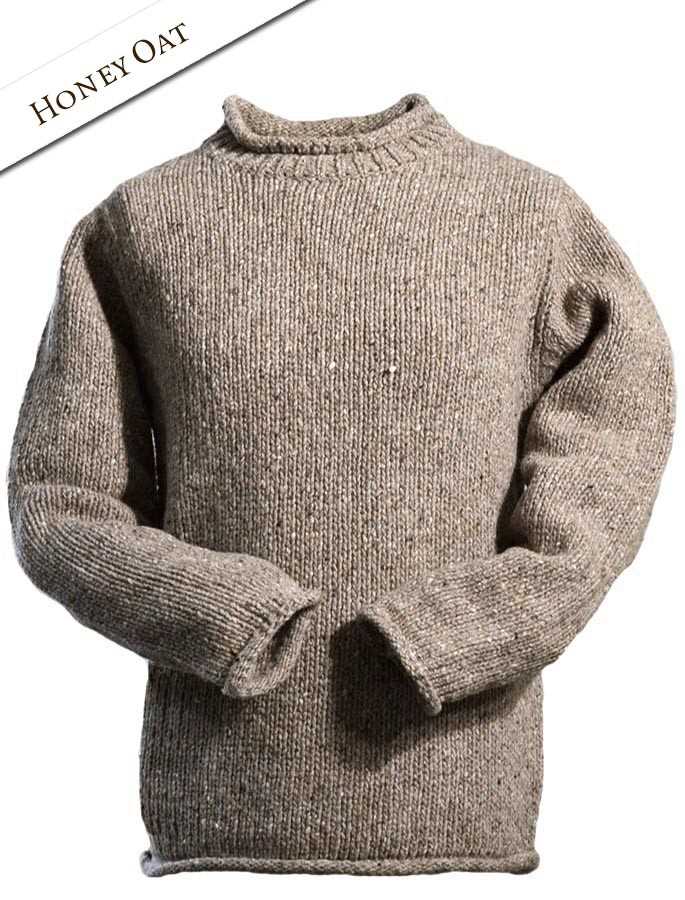
Irish Fisherman sweaters, also known as Aran sweaters, are famous for their intricate patterns and high-quality craftsmanship. These sweaters have become iconic symbols of Irish heritage and tradition. Here are some typical features of these beautiful garments:
- Cable Knit Patterns: One of the most distinctive features of Irish Fisherman sweaters is the intricate cable knit patterns. These patterns are created by crossing and twisting the stitches, resulting in a raised texture that resembles cables. The cable knit patterns often symbolize different elements of Irish history and culture.
- Warm and Durable: Irish Fisherman sweaters are made from natural wool, which provides excellent insulation and warmth. The thick and heavy wool makes these sweaters perfect for cold and windy weather conditions. Additionally, the natural properties of wool make these sweaters incredibly durable, ensuring that they can last for many years.
- Close-Fitting and Comfortable: Irish Fisherman sweaters are traditionally designed to have a close-fitting silhouette. This not only helps to trap heat but also gives the sweater a stylish and sophisticated look. Despite their close fit, these sweaters are still very comfortable to wear, thanks to the softness and flexibility of the wool.
- Turtleneck or Crew Neck: Irish Fisherman sweaters are often available in two different neck styles – turtleneck and crew neck. The turtleneck style provides extra warmth and can be folded down or pulled up as needed. The crew neck style, on the other hand, offers a more casual and relaxed look.
- Natural Colors: The color palette of Irish Fisherman sweaters usually consists of earthy tones and natural colors like cream, gray, brown, and navy blue. These colors not only complement the rustic aesthetic of the sweaters but also make them versatile and easy to match with different outfits.
Overall, Irish Fisherman sweaters are timeless and classic pieces of clothing that embody the rich cultural heritage of Ireland. Whether you’re exploring the rugged landscapes of the Emerald Isle or simply want to add a touch of traditional charm to your wardrobe, an Irish Fisherman sweater is a perfect choice.
Kinds of Knitting Patterns Used
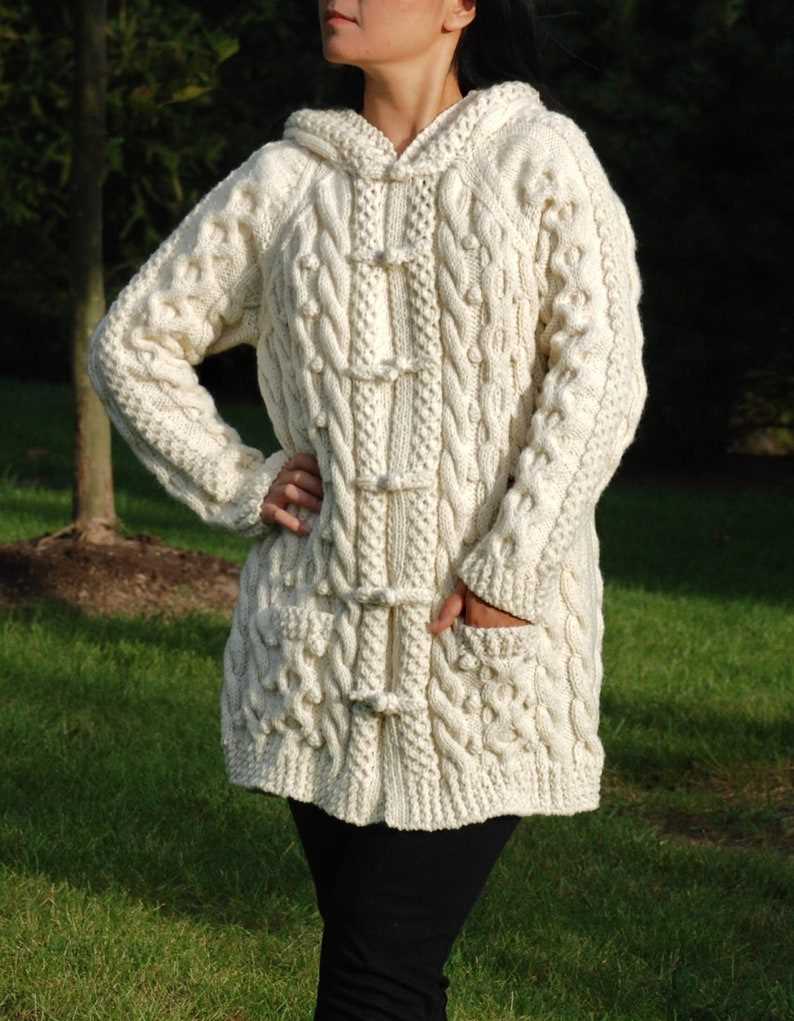
Irish fisherman sweaters are known for their intricate knitting patterns, which not only add to the beauty of the garment but also provide warmth and durability. These sweaters often feature traditional stitches and motifs that have been passed down through generations of Irish knitters. Here are some of the common knitting patterns used in Irish fisherman sweaters:
1. Cable Stitch: The cable stitch is one of the most recognizable knitting patterns in Irish fisherman sweaters. It involves twisting sections of knitted stitches over each other to create a raised cable-like pattern. This stitch is not only visually appealing but also adds extra insulation to the sweater, making it ideal for cold and windy weather.
2. Diamond Stitch: The diamond stitch is another popular pattern used in Irish fisherman sweaters. It consists of a series of diagonally crossed lines that form diamond shapes. This stitch adds texture and interest to the sweater and is often combined with other stitches to create intricate designs.
3. Tree of Life Stitch: The tree of life stitch is a highly symbolic pattern found in many traditional Irish fisherman sweaters. It depicts a tree with branches extending upwards, representing strength, growth, and continuity. This stitch is often placed at the center of the sweater, making it a focal point of the design.
4. Basket Stitch: The basket stitch is a simple yet effective pattern that resembles woven baskets. It is created by alternating knits and purls in a specific sequence to mimic the texture of a basket. This stitch adds visual interest and gives the sweater a cozy, textured look.
5. Honeycomb Stitch: The honeycomb stitch is another classic pattern used in Irish fisherman sweaters. It features interconnected hexagonal shapes that resemble honeycombs. This stitch has a unique texture and provides extra warmth to the garment.
These are just a few examples of the many knitting patterns used in Irish fisherman sweaters. Each stitch has its own significance and contributes to the overall beauty and functionality of the garment.
Cable Knit Patterns
Cable knit patterns are a classic and timeless choice for knitting projects. With their intricate and textured designs, cable knit patterns add a touch of sophistication and elegance to any garment. One popular use of cable knit patterns is in Irish fisherman sweaters, where the cable stitches are used to create beautiful and durable sweaters that are perfect for colder climates.
The cable knit patterns in Irish fisherman sweaters often feature motifs that are inspired by the rugged landscapes and seafaring traditions of Ireland. The cables can resemble ropes, waves, or other nautical elements, creating a unique and distinctive look. These patterns are not only aesthetically pleasing but also functional, as the cables help to create a thick and warm fabric that is perfect for keeping the wearer cozy in cold weather.
Creating cable knit patterns requires some skill and practice, but the results are well worth the effort. There are various cable stitch patterns to choose from, ranging from simple designs with just a few cables to more intricate patterns with multiple interwoven cables. Some popular cable stitch patterns include the classic six-stitch cable, the honeycomb cable, and the diamond braid cable.
When working with cable knit patterns, it is important to pay attention to the chart or written instructions to ensure that the cables are crossed correctly. A cable needle or a double-pointed needle can be used to hold the stitches while crossing the cables. Tension is also crucial in cable knitting, as a loose tension can cause the cables to lose their definition, while a tight tension can result in a stiff and uncomfortable fabric.
Cable knit patterns can be used in a variety of knitting projects, including sweaters, scarves, hats, and blankets. Whether you are a beginner or an experienced knitter, trying out cable knit patterns can be a rewarding and enjoyable experience, allowing you to create beautiful and unique pieces that showcase your knitting skills.
Diamond Stitch Patterns
The diamond stitch pattern is a classic and iconic design used in Irish fisherman sweaters. It is a versatile stitch that can be incorporated into various knitting projects, adding texture and visual interest to the finished piece. The diamond stitch pattern creates a beautiful diamond-shaped motif that is often featured as a central focus or an all-over pattern on the sweater.
How to knit the diamond stitch pattern:
To knit the diamond stitch pattern, you will need to follow a specific set of instructions. The pattern usually consists of a repeated sequence of stitches that create the diamond motif. It involves a combination of knits, purls, and decreases to form the distinct shape. The result is a textured pattern that stands out and adds depth to the knitted fabric.
Here is a sample pattern for the diamond stitch:
- Row 1: Knit
- Row 2: Purl
- Row 3: *K1, P3, K1* (repeat between * for entire row)
- Row 4: Purl
- Row 5: *P1, K3, P1* (repeat between * for entire row)
- Row 6: Purl
- Row 7: *K1, P1, K1, P1, K1* (repeat between * for entire row)
- Row 8: Purl
- Repeat rows 1-8 for desired length
Uses and variations:
The diamond stitch pattern can be used in various knitting projects, not just Irish fisherman sweaters. It is often seen in accessories such as hats, scarves, and mittens. Additionally, the size and placement of the diamond motif can be modified to create different effects and customize the pattern to suit individual preferences. Some variations include incorporating cables or different types of stitches within the diamond motif, creating even more intricate and unique designs.
| Pros | Cons |
|---|---|
| Provides a classic and timeless look. | Requires careful attention to the pattern and stitch count. |
| Creates a textured fabric that is warm and cozy. | May take longer to knit due to the complexity of the pattern. |
| Can be customized to suit different projects and personal style. | Requires some experience and skill in knitting. |
In conclusion, the diamond stitch pattern is a beautiful and intricate design that adds elegance and charm to knitting projects. Whether used in an Irish fisherman sweater or other accessories, this pattern is sure to create a stunning finished piece that will be treasured for years to come.
Tree of Life Patterns
Tree of Life patterns are a popular motif in Irish fisherman knitwear, particularly in the design of sweaters. These intricate patterns depict the tree of life, symbolizing growth, strength, and connection to family and ancestry. The Tree of Life is often represented with branches reaching up to the sky and roots spreading deep into the earth, symbolizing the link between heaven and earth.
The Tree of Life patterns add an extra layer of meaning and symbolism to the already rich tradition of Irish fisherman sweaters. These patterns are typically knitted into the front or back panel of the sweater, serving as a focal point and creating a visually striking design. The intricate cables and stitches used in these patterns require skill and attention to detail, making each sweater a unique work of art.
There are many variations of the Tree of Life pattern, each with its own unique interpretation and symbolism. Some patterns feature a single tree, while others incorporate multiple trees intertwined with each other. The branches may be adorned with leaves or flowers, representing growth and renewal, while the roots can symbolize grounding and stability.
- The Tree of Life patterns are often associated with traditional Aran knitting techniques, which originated in the Aran Islands off the west coast of Ireland.
- These patterns are not only visually appealing but also carry deep cultural and historical significance.
- Wearing a sweater with a Tree of Life pattern can be a way to connect to Irish heritage and traditions.
- The Tree of Life designs are timeless and can be incorporated into various types of knitwear, including scarves, hats, and blankets.
 |
 |
|---|---|
| A beautiful example of a Tree of Life pattern on a sweater. | A Tree of Life pattern can also be incorporated into other knitwear, such as hats. |
In conclusion, Tree of Life patterns are a stunning addition to Irish fisherman knitwear, adding depth and symbolism to the already beloved tradition. Whether incorporated into sweaters, scarves, or hats, these patterns are a beautiful representation of growth, strength, and connection.
Materials Used in Irish Fisherman Sweaters
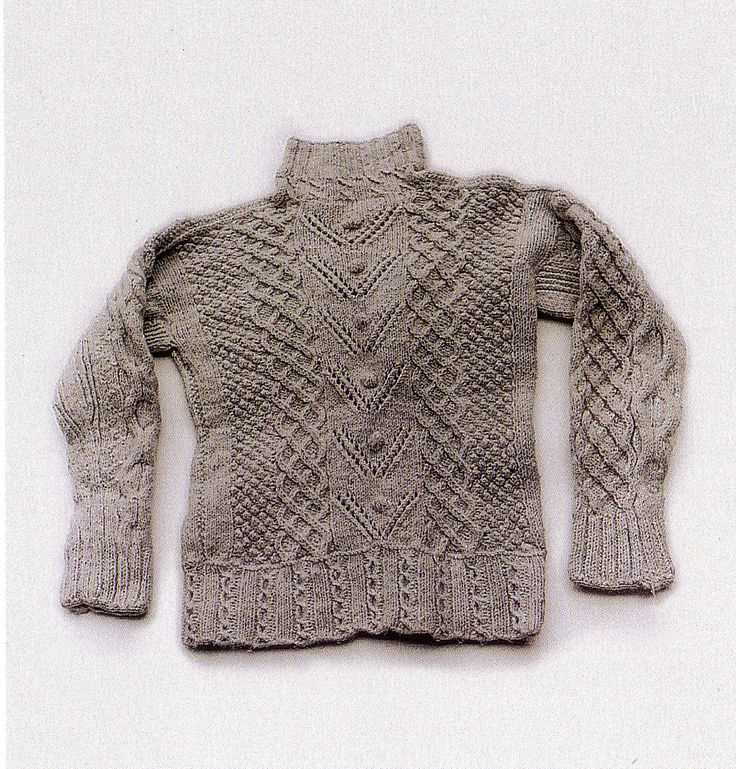
Irish fisherman sweaters are known for their high-quality craftsmanship and durable materials. These traditional garments are not only stylish but also provide warmth and protection against the harsh Irish weather.
1. Wool: The primary material used in Irish fisherman sweaters is wool. Wool from sheep is known for its excellent insulation properties and ability to retain heat even when wet. The wool used in these sweaters is usually sourced from the local sheep farms in Ireland, ensuring its authenticity and quality.
2. Cable Stitch Patterns: Irish fisherman sweaters are characterized by intricate cable stitch patterns. These patterns not only add aesthetic appeal but also provide additional warmth and insulation. The cables are created by knitting stitches out of order, creating a unique texture and pattern.
3. Natural Dyes: Traditional Irish fisherman sweaters often use natural dyes to achieve their rich and earthy colors. These dyes are made from plants, berries, and other natural sources, giving the sweaters a distinct and authentic look. The use of natural dyes also aligns with sustainable and eco-friendly practices.
4. Merino Wool: Some Irish fisherman sweaters may be made from merino wool, which is known for its softness and luxurious feel. Merino wool comes from Merino sheep, which are bred specifically for their high-quality wool. Sweaters made from merino wool are often considered more lightweight and comfortable to wear.
5. Alpaca Wool: Alpaca wool is sometimes blended with traditional wool to create Irish fisherman sweaters. Alpaca wool is hypoallergenic, soft, and provides excellent insulation, making it a popular choice for those with sensitive skin. The blend of alpaca wool and traditional wool adds a luxurious touch to the sweater while maintaining its durability and warmth.
In conclusion, Irish fisherman sweaters are crafted from high-quality materials, including authentic wool sourced from local sheep farms. These sweaters feature intricate cable stitch patterns and often use natural dyes to achieve their unique colors. Whether made from traditional wool or blended with luxurious fibers like merino wool or alpaca wool, these sweaters are designed to provide both style and functionality in cold weather conditions.
Tips for Knitting Your Own Irish Fisherman Sweater
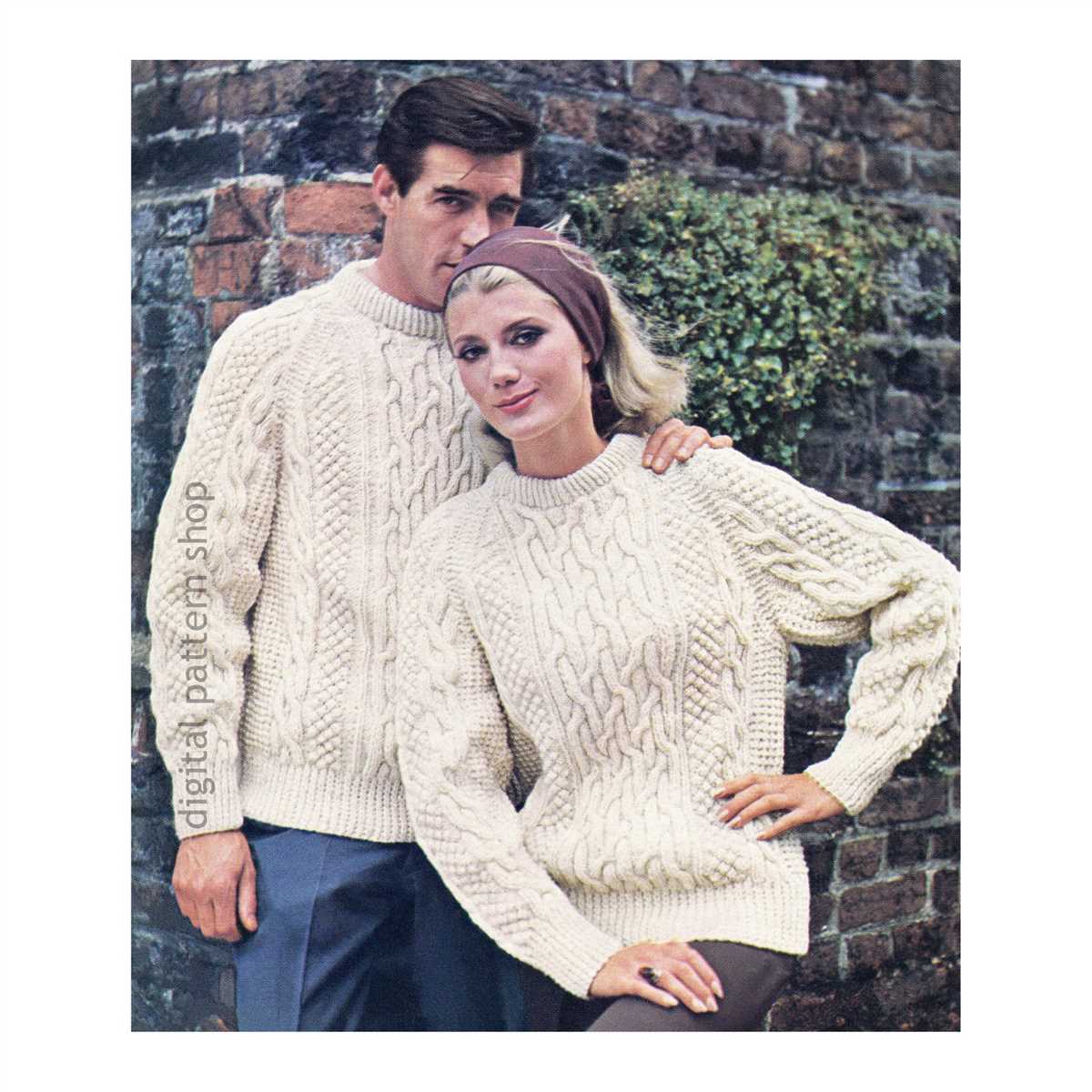
Knitting your own Irish fisherman sweater can be a rewarding and satisfying project. These iconic sweaters are known for their intricate cable patterns and cozy warmth. Whether you’re an experienced knitter or just starting out, these tips will help you create a beautiful and authentic Irish fisherman sweater.
1. Choose the right yarn: When knitting an Irish fisherman sweater, it’s important to use a yarn that is durable and warm. Look for a heavy worsted weight yarn made of natural fibers, such as wool or a wool blend. This will give your sweater the traditional feel and ensure that it will stand up to wear and tear.
2. Familiarize yourself with cable knitting techniques: Cable knitting is a key element in Irish fisherman sweaters, as it creates the distinctive interlocking patterns. Take the time to practice cable knitting before starting your sweater, as it can be a bit challenging for beginners. There are many resources available, including online tutorials and books, that can help you master this technique.
3. Use a detailed pattern: Finding a well-written and detailed pattern is crucial for knitting an Irish fisherman sweater. Look for a pattern that includes clear instructions, charts for the cable patterns, and guidance on sizing and finishing techniques. Make sure to read through the pattern before starting, so you have a good understanding of what to expect.
4. Consider adding traditional details: To make your Irish fisherman sweater truly authentic, consider adding traditional details such as a fold-over collar, side seam pockets, or a button closure. These small additions can elevate your sweater and give it an extra touch of Irish charm.
5. Don’t rush: Knitting an Irish fisherman sweater takes time and patience. Remember to enjoy the process and take your time to ensure that each stitch is neat and even. The end result will be well worth the effort!
By following these tips and putting in the effort, you can create your own beautiful Irish fisherman sweater that will stand the test of time and keep you cozy for years to come.
Choosing the Right Yarn
When knitting Irish fisherman sweaters, it’s essential to choose the right yarn to achieve the desired result. The yarn selection plays a crucial role in the overall look and feel of the finished sweater. Here are some key factors to consider when choosing the yarn for your project:
- Wool Type: Opt for a high-quality wool that is known for its warmth and durability. Traditional Irish fisherman sweaters are often made of natural wool, which has excellent insulation properties and can withstand harsh weather conditions.
- Weight: Consider the weight of the yarn based on the desired thickness and warmth of the sweater. Lighter weight yarns are suitable for more delicate and lightweight sweaters, while heavier weight yarns are ideal for thicker and warmer sweaters.
- Texture: Decide on the texture of the yarn based on personal preference and the intended design of the sweater. Smooth and even-textured yarns can showcase intricate patterns and cables, while more rustic and tweed-like yarns can add character and depth to the garment.
- Color: Choose colors that complement the design and style of the sweater. Traditional Irish fisherman sweaters often feature natural, earthy tones such as cream, gray, and brown. However, feel free to experiment with different colors to add a modern twist to the classic sweater.
- Availability: Consider the availability of the yarn and its cost. Some specialty yarns may be harder to find or more expensive, so it’s important to balance your budget and desired quality.
Overall, selecting the right yarn for your Irish fisherman sweater project requires careful consideration of factors such as wool type, weight, texture, color, and availability. By choosing the right yarn, you can ensure that your finished sweater not only looks beautiful but also provides the warmth and durability associated with traditional Irish fisherman sweaters.